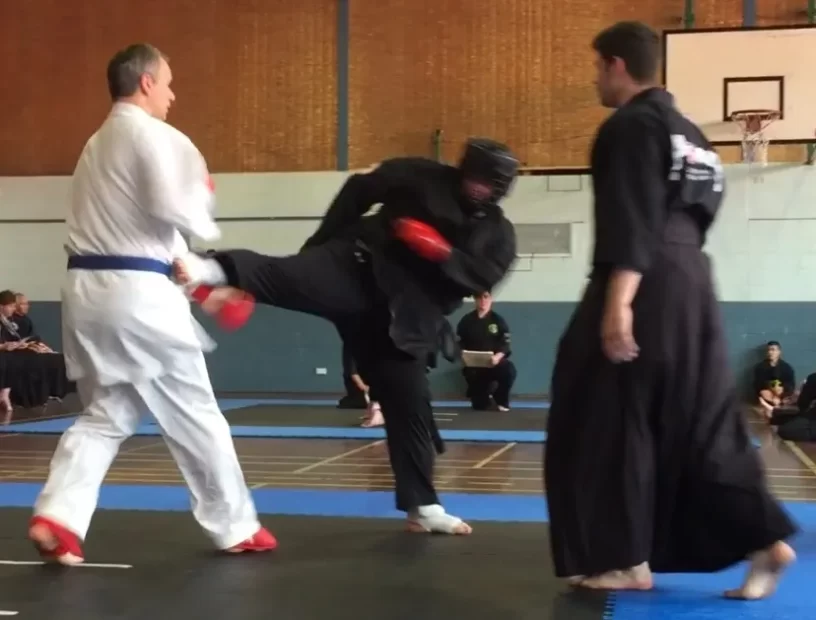Wing Chun Comparing Techniques to Other Fighting Styles: The Importance of Footwork in Other Martial Arts
By Maurice Novoa a master under the Yuen Kay Shan, Ip Man and Pan Nam lineages.
Introduction:
Footwork is a fundamental aspect of martial arts training, influencing the effectiveness and efficiency of techniques in various fighting styles. While each martial art has its unique footwork principles and strategies, it is interesting to compare Wing Chun techniques to those found in other disciplines. Understanding the importance of footwork across different martial arts can provide valuable insights and enhance one’s overall fighting skills.
1. Footwork in Wing Chun: Balance and Efficiency
Wing Chun’s footwork is characterized by its emphasis on balance and efficiency. Practitioners maintain a rooted stance, distributing weight evenly and allowing for swift weight shifts and agile movements. The central principle of Wing Chun footwork is to maintain a strong centerline, which ensures that strikes and defensive maneuvers are executed with precision and speed. By mastering the footwork in Wing Chun, practitioners can effectively control the distance, angle, and timing of their techniques.
2. Footwork in Boxing: Mobility and Agility
Boxing, known for its dynamic footwork, emphasizes mobility and agility. Boxers utilize various footwork patterns, such as the shuffle and the pivot, to generate power, create angles, and evade incoming strikes. The footwork in boxing enables boxers to move swiftly around the ring, utilizing effective combinations and maintaining a defensive stance. By developing quick footwork, boxers can effectively control the distance and rhythm of a fight, enabling them to deliver powerful punches while avoiding counterattacks.
3. Footwork in Muay Thai: Balance and Versatility
Muay Thai incorporates a combination of strong and stable footwork with explosive movements. Practitioners adopt a squared stance, which provides a solid base for powerful strikes and effective clinching. Muay Thai footwork involves quick steps, pivots, and angles to maintain balance, deliver devastating kicks, and move seamlessly between offensive and defensive positions. By mastering Muay Thai footwork, fighters can effectively navigate the range of attacks and counterattacks while maintaining stability and generating power.
4. Footwork in Brazilian Jiu-Jitsu: Strategic Positioning
Brazilian Jiu-Jitsu (BJJ) places a significant emphasis on groundwork and grappling techniques. While footwork may not be as prominent as in striking arts, BJJ practitioners use foot positioning to establish control and prevent opponents from escaping or countering. Footwork in BJJ involves precise weight distribution, strategic steps, and pivots to secure advantageous positions and execute submissions. By understanding footwork in BJJ, practitioners can effectively maneuver on the ground, maintain dominant positions, and execute techniques with precision.
5. Footwork in Taekwondo: Speed and Precision
Taekwondo, renowned for its dynamic kicking techniques, relies heavily on agile footwork. Practitioners utilize quick footwork patterns, such as the sliding step and the skip step, to generate momentum and execute high-impact kicks with speed and precision. Taekwondo footwork enables practitioners to maintain a safe distance, close the gap rapidly, and deliver devastating strikes. By mastering Taekwondo footwork, practitioners can effectively employ their kicking techniques, maintain balance during fast movements, and create openings for effective combinations.
6. Footwork in Karate: Stability and Power
Karate emphasizes a strong and rooted stance, which serves as a foundation for powerful strikes and effective defense. Karateka focus on maintaining stability through deep stances and controlled weight distribution. Footwork in karate involves subtle weight shifts, pivots, and quick steps to generate power, create angles, and execute techniques with maximum impact. By mastering the footwork in Karate, practitioners can effectively generate power from the ground, maintain stability during strikes and blocks, and seamlessly transition between different techniques.
Conclusion:
Footwork plays a crucial role in various martial arts disciplines, including Wing Chun, boxing, Muay Thai, Brazilian Jiu-Jitsu, Taekwondo, and Karate. While each style has its unique footwork principles and strategies, the underlying importance remains the same – balance, mobility, positioning, and the ability to generate power efficiently. By studying and understanding footwork across different martial arts, practitioners can broaden their knowledge, adapt their techniques, and enhance their overall combat skills. Incorporating footwork training into their practice allows martial artists to control space, create angles, and optimize their techniques, ultimately becoming more effective and versatile fighters.

